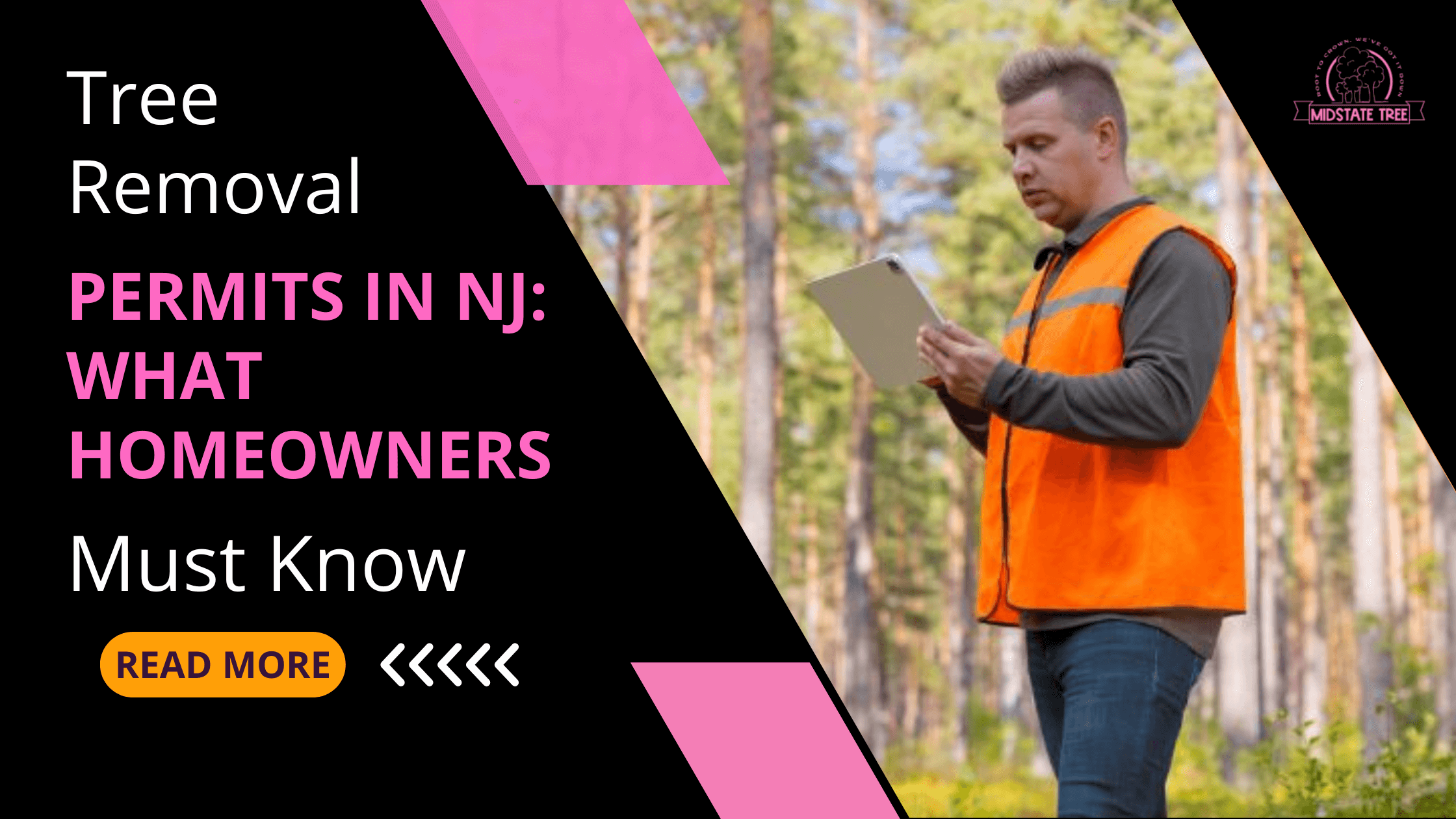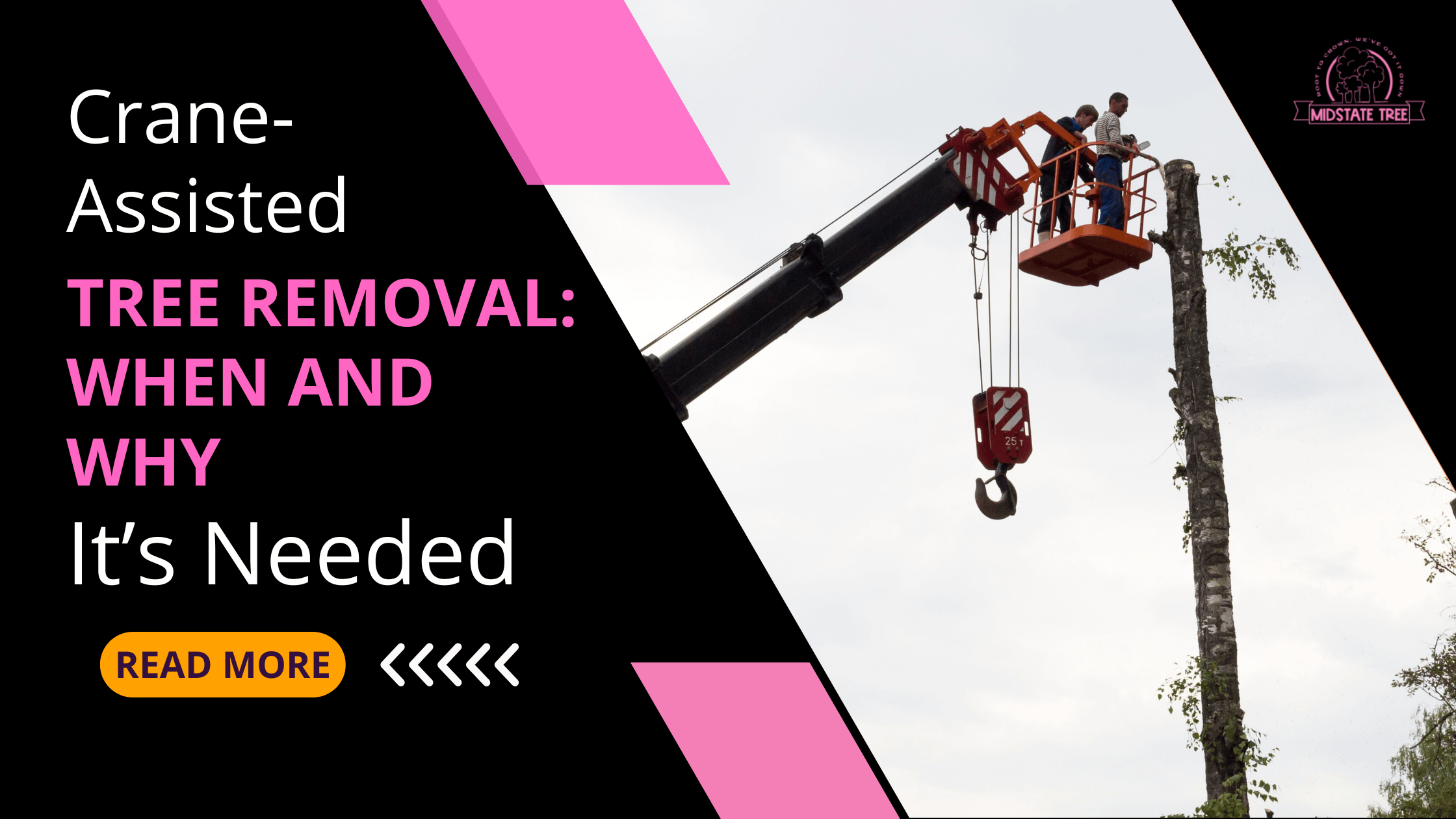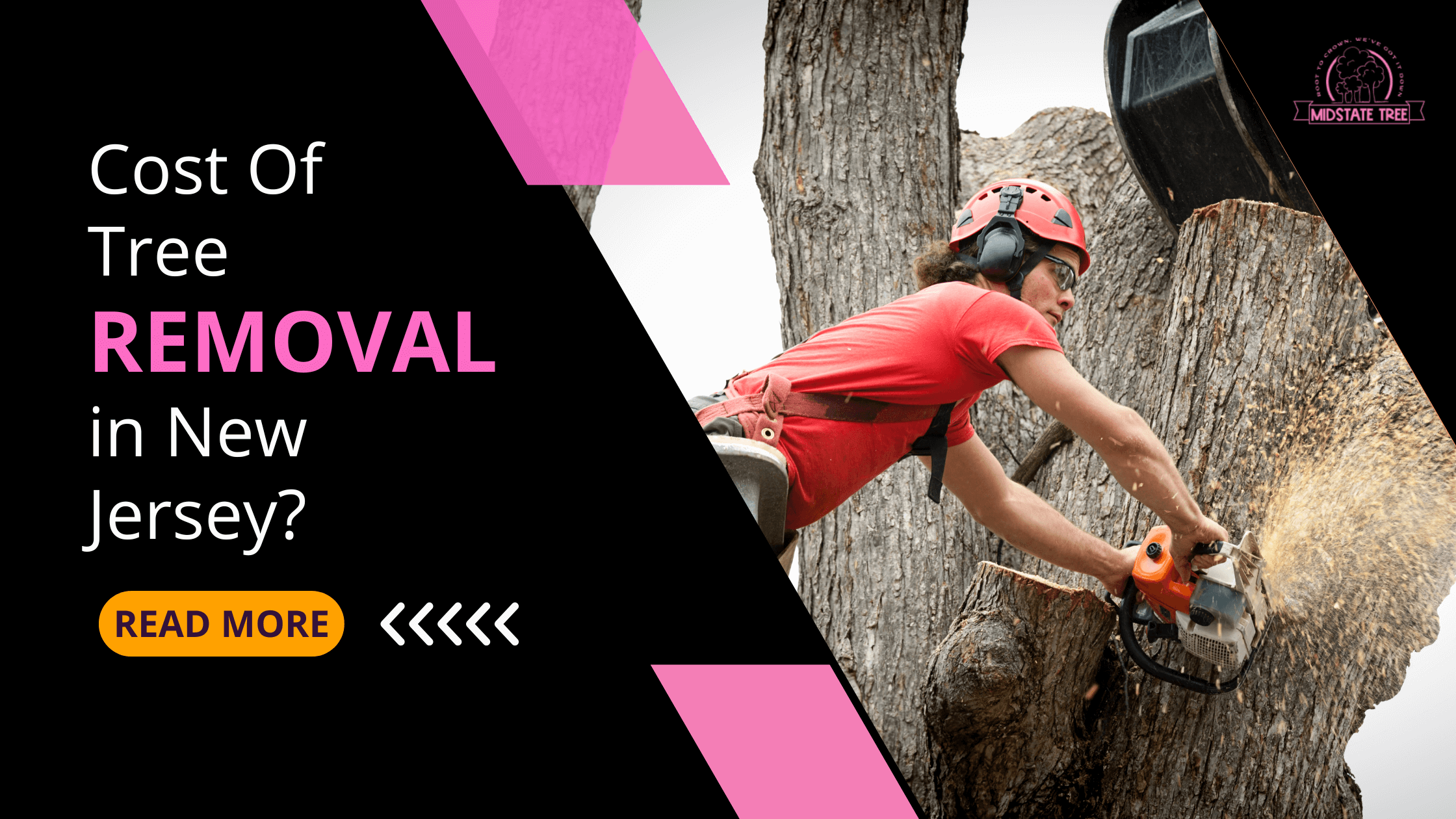Quick answer:
Tree removal in New Jersey typically costs between $350 and $3,500 per tree.
Prices vary depending on height, diameter, location, tree species, and whether a crane or emergency service is needed.
In areas like Flemington or Clinton, small tree jobs might be as low as $375, while large, hazardous trees needing cranes could cost upwards of $5,000.
NJ Tree Removal Cost at a Glance
Here’s what most homeowners in New Jersey can expect to pay:
| Tree Size | Average Cost Range |
|---|---|
| Small (under 30 feet) | $300 – $700 |
| Medium (30–60 feet) | $650 – $1,400 |
| Large (60–80 feet) | $1,200 – $2,800 |
| XL or Hazardous | $2,500 – $7,500+ |
| Stump Grinding | $100 – $450 |
| Emergency/Storm Removal | 1.5× to 3× standard pricing |
| Crane-Assisted Removals | $2,000 – $7,500 |
These are ballpark figures. The exact cost depends on several local and tree-specific factors.
Why NJ Tree Removal Prices Vary
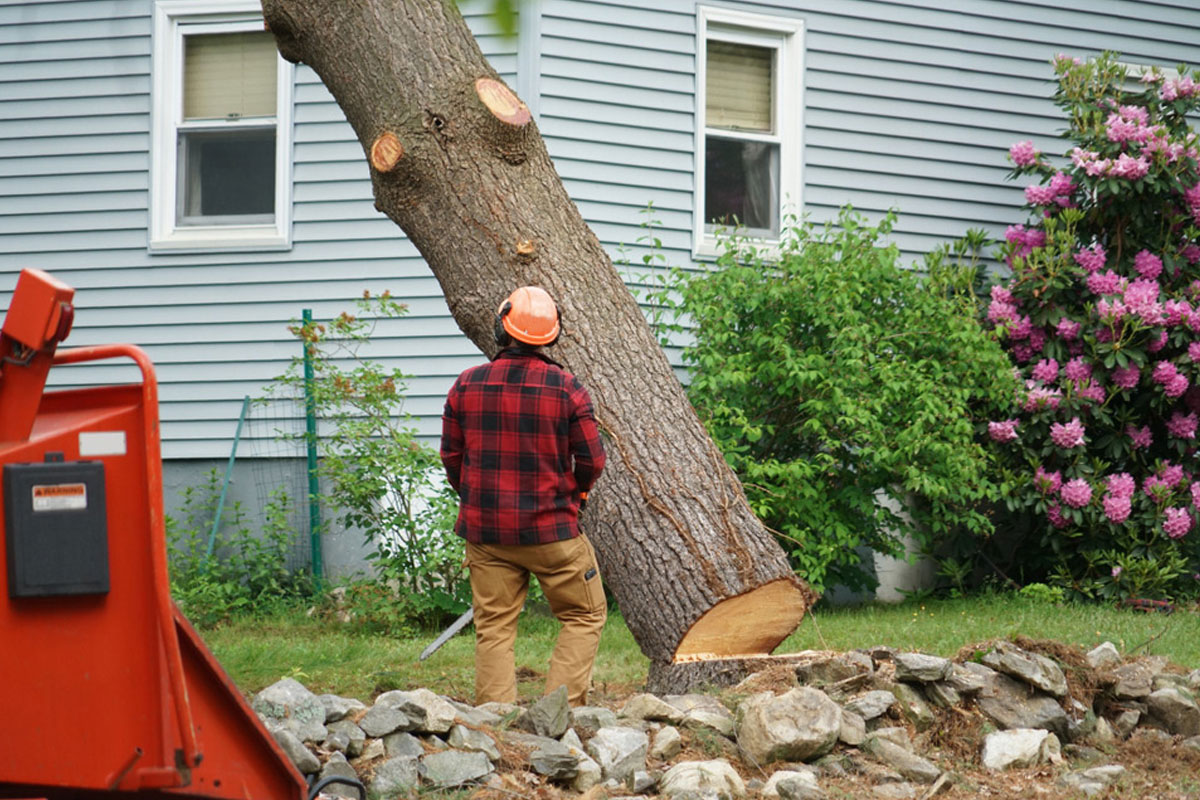
Tree removal costs in New Jersey can feel all over the place—and that’s not by accident.
Unlike flat-rate services, the cost of cutting down a tree depends heavily on where you live, how your property is laid out, and even what town you’re in.
Below, I’ll explain what actually drives those price differences in NJ, so you’ll know what to expect.
1. Urban vs. Suburban Access: Why Where You Live Matters
Let’s start with something simple: space. In cities like Jersey City, Hoboken, and Montclair, properties are tightly packed. That means:
Tree crews often can’t fit a bucket truck, chipper, or crane in your driveway.
Workers must climb the tree and lower limbs by hand, using rigging systems.
Large branches need to be lowered carefully over garages, fences, or power lines.
All of this adds hours of labor, safety risk, and insurance exposure, which drives up the cost.
In contrast, towns like Flemington, Clinton, or Washington Township tend to have wider lots, better access, and fewer obstacles. That means:
Equipment can park near the tree
Debris can be hauled away faster
Bucket trucks or cranes can do the heavy lifting, safely and efficiently
So, two identical trees—one in a city lot and one on a suburban property—can differ in price by 30% or more just because of location.
2. Municipal Tree Laws & Permitting Requirements
Some towns in New Jersey have strict tree ordinances that directly impact the cost of removal.
For example:
In Maplewood, you’ll need a tree removal permit for anything over 8 inches DBH (diameter at breast height)
Princeton might require a replanting plan if a healthy tree is removed
Montclair charges a tree mitigation fee per tree, depending on canopy size
If you live in these regulated areas, you’ll often pay more because:
There’s extra paperwork
You may need a certified arborist’s report
Delays or inspections can stretch the timeline
On top of that, some towns also charge $50–$250 in permit fees, which gets passed on to you, the homeowner.
3. Topography, Terrain, and Tree Placement
New Jersey isn’t flat, and terrain absolutely affects pricing. Here’s how:
Trees growing on sloped yards, retaining walls, or near septic fields need special rigging and drop techniques.
If the ground is too soft, heavy equipment like cranes or stump grinders can’t be used safely.
Trees near rivers or wetlands may also require environmental compliance.
For example, a tree in Milford on a steep bank above a stream will be far more labor-intensive (and expensive) than one in a flat Clinton backyard.
4. Shoreline vs. Inland Weather Exposure
If you live near the Jersey Shore (Monmouth, Ocean, Atlantic counties), chances are your trees have seen salt exposure, high winds, or hurricane damage. That adds several complications:
Trees exposed to repeated storms may be weakened or hollow, increasing removal risk.
Coastal wind shear causes asymmetrical canopies, making safe drops tricky.
After storms, emergency call-outs spike in demand, which increases pricing 1.5× to 3×
Even inland areas like Hunterdon or Somerset Counties see increased costs after Nor’easters, especially for fallen trees blocking roads, hitting houses, or tangled in power lines.
5. Tree Density and Species-Specific Costs
Let’s not forget what type of tree you have. Tree species vary wildly in how hard they are to remove:
Oak trees have dense wood that takes longer to cut and haul.
Ash trees, especially those killed by the emerald ash borer, are brittle and dangerous to climb.
Pine trees are tall but soft and easier to section out.
Maples have broad canopies that need more horizontal rigging.
So, a 60-foot oak might cost $1,800 to remove, while a similar-sized pine could cost just $1,200, even in the same town.
TL;DR: Why the Same Tree Can Cost More in NJ
| Factor | How It Affects Cost |
|---|---|
| Property access | Limits equipment, adds labor |
| Town regulations | Permits, replanting, delays |
| Terrain/topography | Safety + setup complexity |
| Weather/storm damage | Emergency rates, risky trees |
| Tree species | Some trees take longer to remove |
If you’re unsure what you’ll need, Midstate Tree can walk your property and help explain which of these factors will apply to your job. We serve Flemington, Clinton, Washington, and surrounding towns, and always include permits, cleanup, and safety assessments in our free estimates.
What Affects Tree Removal Costs the Most?
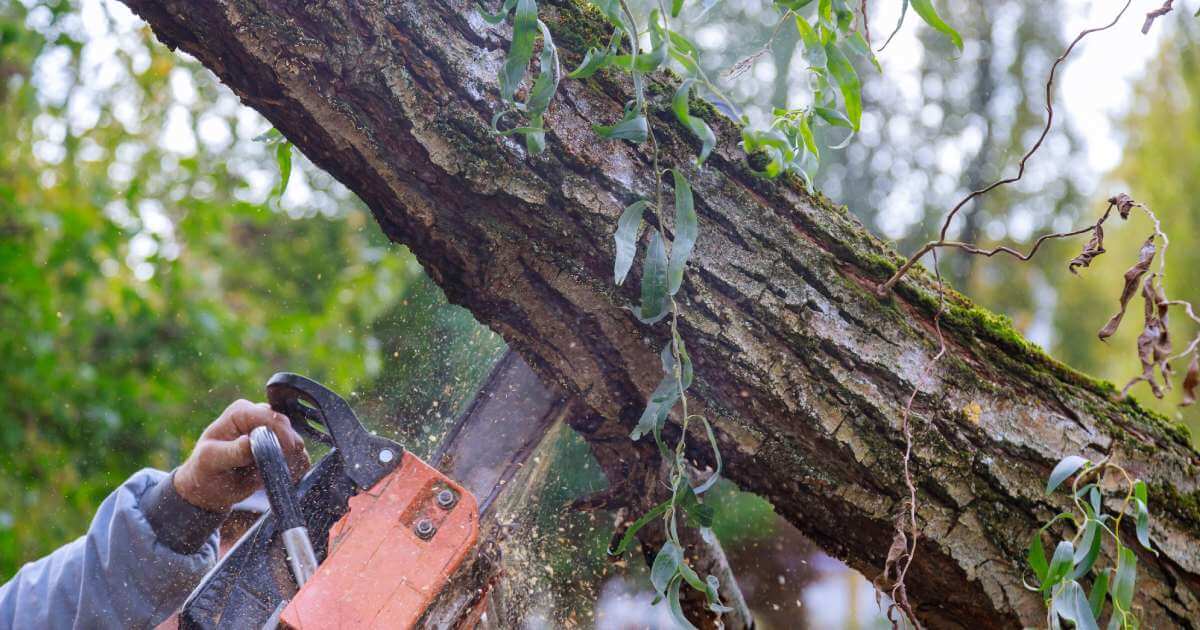
When it comes to pricing out tree removal in New Jersey, no two jobs are the same. Even if two trees are the same size, their species, location, and job conditions can change the cost dramatically.
Let’s take a look at the core cost drivers you need to understand before you get a quote.
Tree Characteristics
These are the physical features of the tree itself — its size, condition, species, and position — and they have the biggest influence on the base cost.
1. Height and Girth (Diameter at Breast Height – DBH)
The taller or thicker the tree, the more expensive it is to remove. Here’s why:
A tall tree (60–100+ feet) requires longer rigging lines, heavier ropes, and sometimes a crane or aerial lift.
A wide tree trunk with a large DBH means more chainsaw time, larger wood chunks, and heavier hauling weight.
Taller trees must often be dismantled from the top down, especially near structures, which takes longer and increases labor costs.
2. Tree Species
Some trees are simply harder to remove than others. Here’s a breakdown:
Oak: Dense, hardwood, heavy logs. Takes more time to cut and transport. Higher wear on tools.
Maple: Wide-spreading canopy and multiple leads (main branches) make rigging more complex.
Ash: Often dead from Emerald Ash Borer (EAB) infestation. These trees become brittle and dangerous to climb.
Pine: Tall and straight, but lighter and easier to fell, often lowering cost.
Tree species affect how long a job takes, what tools are needed, and how safe the removal is.
3. Tree Health & Structural Integrity
Dead or decaying trees are far riskier to remove. They can snap during climbing or collapse unpredictably.
Trees with internal rot, lean, or cavities require advanced rigging, sometimes even full crane support.
If a tree is infested with insects, like carpenter ants or beetles, it may not hold a climber’s weight, requiring a full aerial lift or felling in one piece.
Unstable trees often cost 20%–50% more than healthy ones due to safety and complexity.
4. Location on the Property
Where the tree stands is just as important as what it is.
A tree hanging over a house, garage, fence, or power lines takes much more care to remove.
Trees near septic systems, patios, or underground lines can’t be dropped in one piece.
Trees close to the property line or a neighbor’s fence need special handling and sometimes legal clearance.
All of these increase job time and liability.
Job Site Conditions
Even the perfect tree becomes a nightmare to remove if your property isn’t equipment-friendly. These are the logistical factors that influence how efficiently the team can do their work.
1. Tight or Limited Access
Can the crew park a chipper, crane, or dump truck close to the tree?
Is there room for a bucket truck to get in and lift the climber?
Can large trunk sections be hauled out, or do they need to be cut smaller?
If machinery can’t access the site, everything must be done by hand, which means higher labor costs and more time on-site.
2. Nearby Buildings, Fences, or Landscapes
Hardscape and structures complicate things:
Crews must avoid damage to decks, pavers, retaining walls, pools, or landscaping beds
Trees that lean toward buildings or fences must be dismantled section by section, increasing job time
Sometimes, protective padding or temporary structures are needed, especially for historic homes
This is where insurance premiums, liability risk, and careful rigging techniques really come into play.
3. Site Slope, Soil, and Terrain
Sloped yards can limit crane placement, especially if the equipment is too heavy for soft ground.
Trees on rocky hillsides or retaining walls may require special climbing anchors or custom rigging angles.
Sandy soil or erosion-prone areas may cause trees to lean unpredictably or break at the base.
These elements all introduce extra safety measures — which add cost.
Equipment & Crew Costs
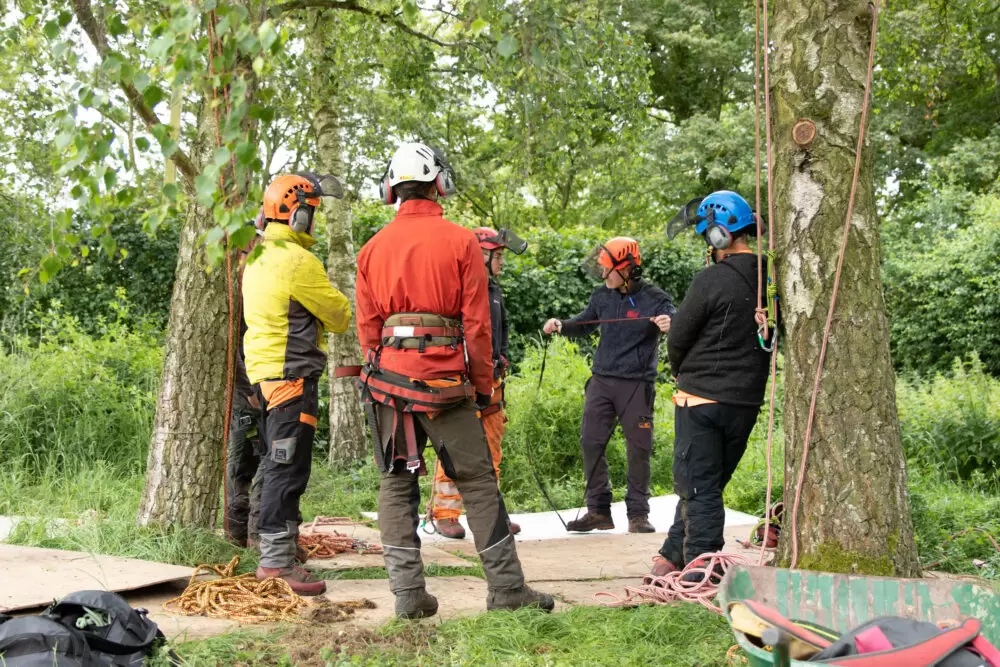
A tree removal job in NJ isn’t just about one guy with a chainsaw. It’s a coordinated crew of licensed professionals using specialized equipment, and these tools are part of the price.
1. Crane Rental
Needed for large trees, tight quarters, or when the tree is unsafe to climb.
Cranes usually rent for $250–$400 per hour, and large removals may take 4–8 hours, depending on size and setup.
In some cases, crane usage is required by local ordinances if manual removal is deemed unsafe.
2. Rope Riggers and Climbers
The more complex the job, the more skilled climbers are needed.
Professional crews often include ISA Certified Arborists, ground riggers, and bucket operators.
Multiple climbers are needed when a tree has multiple trunks, dangerous lean, or needs high-level sectioning.
Every extra person adds labor hours, but increases safety and efficiency.
3. Traffic Control (Urban or Roadside Trees)
If your tree sits near a street, sidewalk, or public path, the crew might need:
A flagger crew
Orange cones, barriers, and signage
Even permits from your town’s DPW or police escort
This can add $200–$800+, especially in dense areas like Bergen County or near school zones.
TLDR Table: What Adds to Tree Removal Costs?
| Factor | Why It Increases Cost |
|---|---|
| Tall/wide trees | More cutting time, heavier removal |
| Harder species (oak, ash) | More labor + tool wear |
| Dead or decayed | Dangerous = special equipment |
| Over structures or wires | Slow, careful rigging needed |
| Tight access | Manual labor = more crew time |
| Sloped or sensitive terrain | Complicated equipment setup |
| Crane required | $250–$400/hr plus operators |
| City street trees | Traffic control + permit costs |
Pricing by Tree Size, Height & Diameter (DBH)
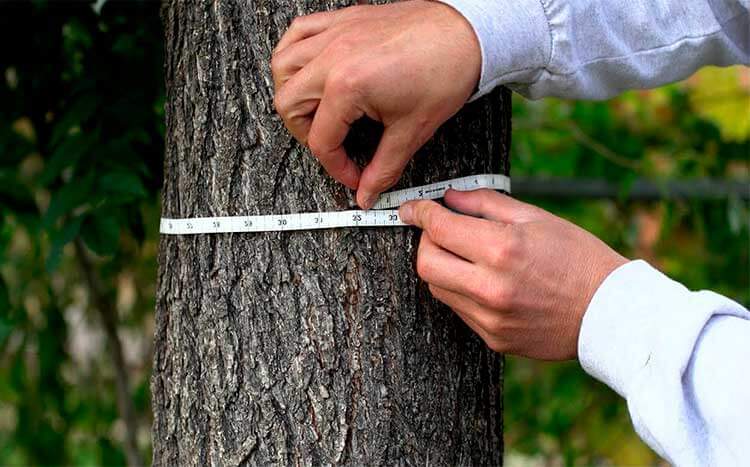
Most tree companies in NJ estimate pricing based on height, diameter at breast height (DBH), and hazard level. Here’s how that breaks down:
By Height:
Under 30 feet (like dogwoods or young pines): $300 – $700
30–60 feet (maples, ash): $650 – $1,400
60–80 feet (oaks, tulip trees): $1,200 – $2,800
80+ feet or decayed trees: $2,500 – $7,500+ (needs crane)
By Diameter (DBH):
$12 – $35 per inch (base rate)
$35 – $65 per inch (hazardous trees near structures or wires)
Local Price Examples: Flemington, Clinton & More
Here’s a quick look at tree removal price trends by town:
| City | Small Tree | Large Tree | Notes |
|---|---|---|---|
| Flemington | $350 – $700 | $1,300 – $2,800 | Good access, moderate pricing |
| Clinton | $375 – $750 | $1,400 – $3,000 | Slightly higher for large trees |
| Bergen County | $450 – $950 | $2,000 – $4,000 | Urban density raises cost |
| Jersey City / Hoboken | $500 – $1,000 | $2,500 – $5,000+ | Permit + crane fees |
| Princeton | $400 – $800 | $1,500 – $3,200 | Permit often needed |
Add-On Services That Affect Tree Removal Cost (What’s Not Included in the Base Price)
Tree removal isn’t always a one-and-done service. In most cases, the base price only covers cutting the tree down—and that’s it.
But what about the stump? The roots? The logs? What if it fell during a storm and blocked your driveway?
That’s where add-on services come in. These are additional tasks that aren’t automatically included in most quotes but may be necessary to finish the job safely, legally, and cleanly.
Let’s walk through the most common add-ons in New Jersey, what they cost, and when you’ll need them.
1. Stump Grinding
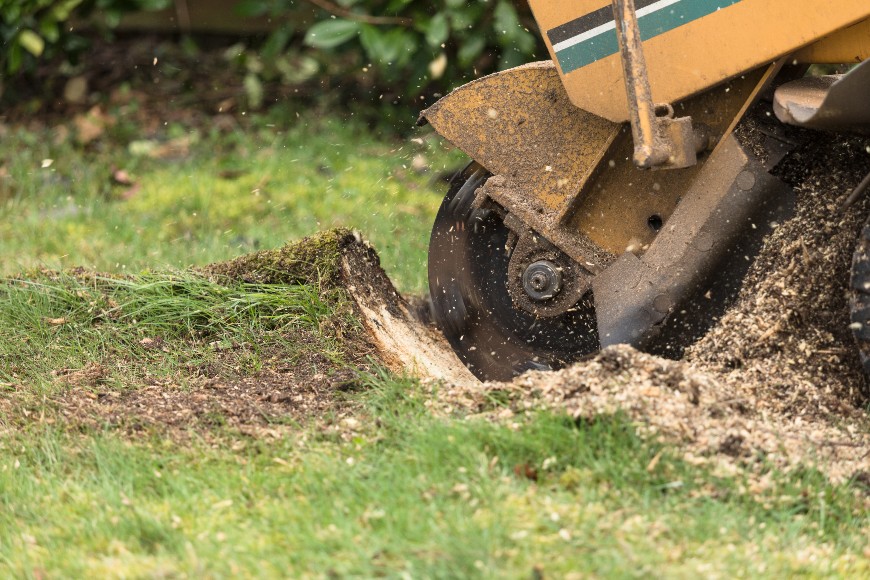
Cost Range: $100 – $450
Or: $2 – $5 per inch of stump diameter
Once the tree is gone, you’re left with the base. Stump grinding removes this unsightly and sometimes hazardous leftover using a special machine that shreds the wood below ground level.
There are two main types:
Standard grinding: 4–6 inches below grade, suitable for lawns and replanting
Deep grind: 10–12 inches or more, needed if you’re laying sod, replanting a tree, or pouring concrete
Some towns require stump removal for safety or replanting reasons. Others allow you to leave it, but pests and tripping hazards can make that a bad idea.
2. Root Tracing / Root Removal
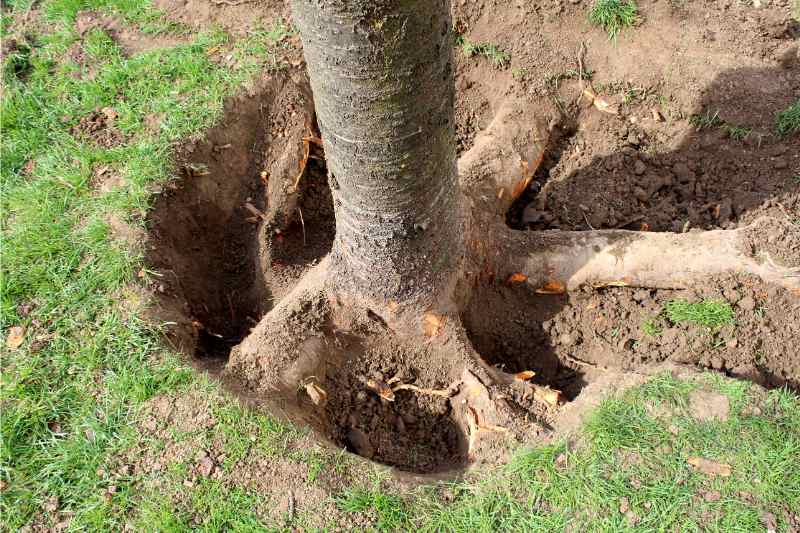
Cost Range: $50 – $200
Deep removal: $250+
Not all root systems die with the tree. In some cases, roots keep growing, especially with aggressive trees like maple, willow, or mulberry.
Root tracing involves:
Following large surface roots that run along lawns or near foundations
Removing roots that may be damaging sidewalks, patios, or driveways
Preventing regrowth or suckering
This is different from stump grinding. Root tracing is more surgical and may involve digging, cutting, and removing long root arms.
3. Firewood Splitting
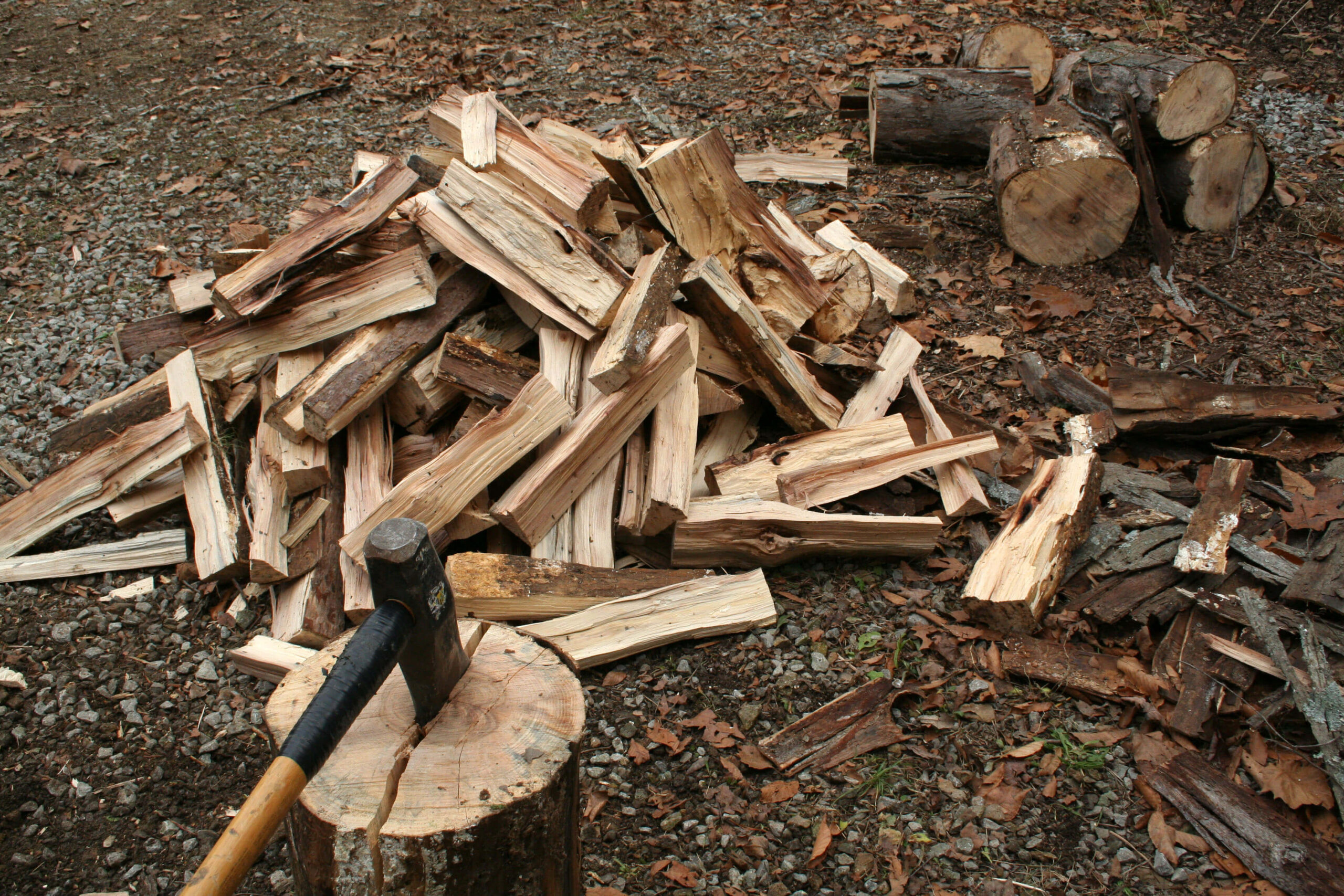
Cost Range: $75 – $250
Some homeowners want to keep the wood for firewood, but large tree trunks are heavy, unmanageable, and unusable unless they’re cut and split.
If you request firewood splitting, the crew will:
Cut logs into 16–18” rounds
Split the wood with a hydraulic splitter or by hand
Stack it neatly, if requested
Firewood splitting saves on hauling fees and gives you free heating fuel, but it’s labor-intensive, hence the added cost.
4. Wood Hauling & Debris Cleanup
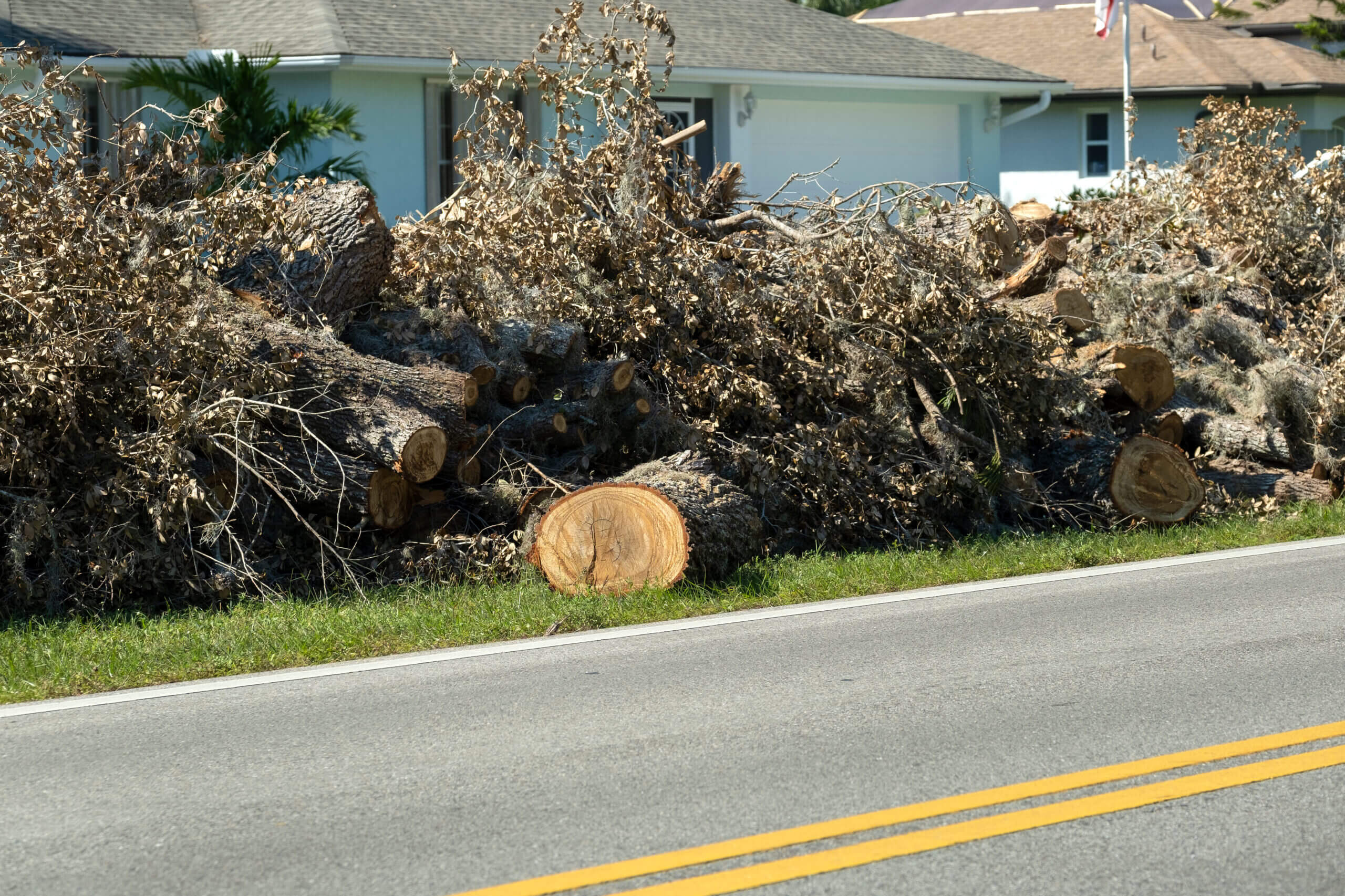
Cost Range: $100 – $350
After cutting a tree down, you’re left with limbs, brush, chips, and logs. If you don’t want them sitting on your property, you’ll need hauling services.
This includes:
Loading logs, branches, and brush into a chipper truck or dump trailer
Transporting the debris to a disposal site, landfill, or mulch yard
Cleaning up wood chips and sawdust left on-site
Some companies offer this as a flat rate. Others base it on volume, using cubic yards or truckloads.
5. Crane-Assisted Tree Removal
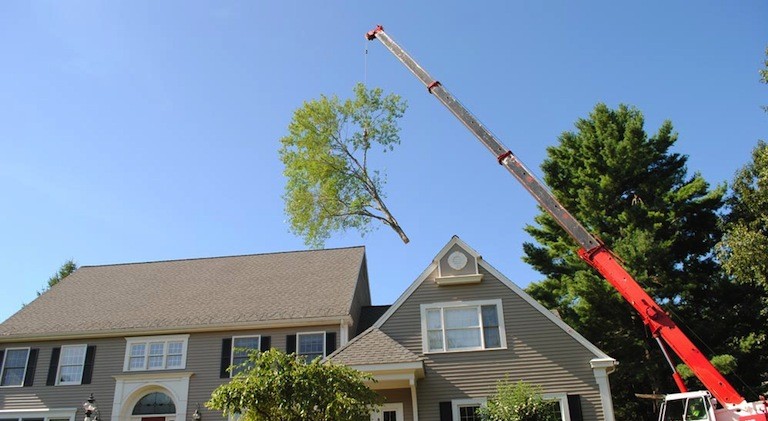
When a tree is too big, too dangerous, or too close to a structure, climbing isn’t safe—so a crane is brought in.
Crane removals are priced higher because they involve:
A licensed crane operator
A separate rigging team
Extensive setup and safety zone clearance
Usually, a city permit for crane usage in streets or tight urban areas
Crane work is common in NJ cities with narrow access—like Hoboken, Elizabeth, and parts of Bergen County.
6. Permit Fees
Cost Range: $0 – $200+
Varies by town or county
Many NJ municipalities require a tree removal permit, especially if:
The tree is above a certain DBH (usually 8–24 inches)
The tree is healthy, and you’re removing it for construction or aesthetics
You live in a regulated neighborhood or historic district
Fees may include:
Flat application fee ($25–$100)
Arborist report cost
Tree mitigation or replanting bond
Always check with your local town or let your arborist handle the permit process.
7. Storm Damage Premium
Cost Multiplier: 1.5× to 3× the normal rate
Storm-damaged trees present unique hazards:
They’re often leaning on structures
Roots may be lifted, destabilizing the tree
Cracks, splits, or hanging limbs increase fall risk for climbers
Emergency calls happen outside normal hours, increasing crew cost
Tree companies charge a premium for storm work, not out of greed—but because it’s dangerous, urgent, and unpredictable.
Storm damage jobs often involve insurance coordination, photos for adjusters, and temporary storm debris clearance.
Optional Add-Ons You Can Request
| Service | Cost | Why You’d Want It |
|---|---|---|
| Log Splitting | $75 – $250 | Keep your wood as firewood |
| Mulch from Chips | Free – $50 | Use chips for your landscape |
| Tree Trunk Carving | Custom | Turn stump into art |
| Stump Excavation | $250 – $500+ | Full root ball removal |
Do I Need a Tree Removal Permit in NJ?
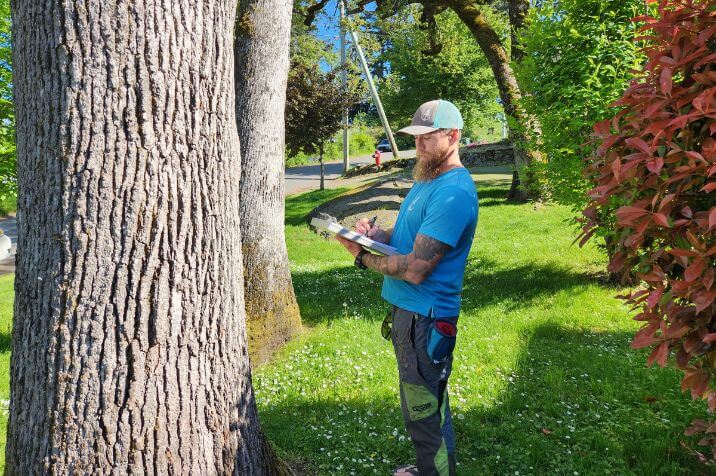
The short answer: sometimes, yes—and it depends on your town.
New Jersey does not have a single statewide tree law. Instead, each municipality or township sets its own tree removal rules, and many have adopted local ordinances to control tree cutting on private property.
Understanding whether you need a permit can save you time, money, and potential fines. Let’s break it all down.
Why Towns Regulate Tree Removal
Trees are considered a public good, even when growing on private land. Towns use tree ordinances to:
Protect the tree canopy from overdevelopment
Maintain air quality, stormwater control, and wildlife habitats
Preserve the aesthetic and historic character of neighborhoods
So, if your town has a tree ordinance, you may need a permit to remove certain trees—especially healthy, mature, or native ones.
Common Permit Triggers in NJ Towns
Here are the most common reasons you’ll need a tree removal permit:
1. Trunk Size (DBH – Diameter at Breast Height)
Most towns set a minimum DBH for protection—often between 8 and 24 inches.
Example: In Montclair, a permit is required for trees over 8 inches DBH
In Princeton, the threshold is 16 inches DBH
In Maplewood, it’s 18 inches, even on private property
If your tree exceeds the town’s DBH limit, you need permission before cutting it down—even if it’s on your own lawn.
2. Tree Health or Condition
Some towns require a certified arborist’s assessment if the tree is:
Healthy (they don’t want unnecessary removals)
Diseased but still standing
Posing a structural threat, like leaning or hollow
You may need to submit:
An ISA Certified Arborist Report
Photos of decay, damage, or root heaving
A hazard tree designation
3. Location on Property
Trees located in front yards, along sidewalks, or near public streets may fall under “public right-of-way” jurisdiction, even if technically on your land.
These trees are often co-managed by the town, especially if planted by the Shade Tree Commission
You’ll need approval before trimming, let alone removing them
Caution: Cutting a street tree without a permit can lead to fines up to $2,000 in some towns.
4. Construction or Renovation Projects
If you’re planning to build a new home, garage, addition, or driveway, and need to remove trees to make room, permits are almost always required.
You may also need to submit a Tree Protection Plan as part of your building application.
Example: South Orange requires a tree protection plan if construction impacts trees within 25 feet of the building zone.
Permit-Related Fees & Conditions
In addition to applying, you may be asked to pay:
| Type | Cost | Description |
|---|---|---|
| Permit Fee | $25 – $200 | Paid when submitting application |
| Replanting Fee | $100 – $500 | Paid if you don’t replant a new tree |
| Tree Mitigation Bond | $300 – $1,500+ | Held as insurance until replanting is done |
| Arborist Report | $75 – $250 | Prepared by licensed tree expert |
Some towns require one-for-one replanting, meaning if you cut down a tree, you must plant another on the same property — or pay a mitigation fee instead.
Town-Specific Permit Examples (2025 Update)
| Town / City | Permit Required? | DBH Threshold | Notes |
|---|---|---|---|
| Montclair | Yes | 8″+ DBH | Must submit photos and application |
| Maplewood | Yes | 18″+ DBH | Replanting or mitigation required |
| Princeton | Yes | 16″+ DBH | Tree removal may delay construction |
| Hoboken | Yes (near curb) | Any size | Even trimming may need approval |
| Clinton Twp | No (residential) | — | Encouraged to replant voluntarily |
| Flemington | No permit | — | But removal within historic district may be reviewed |
Tip: Always double-check with your municipal clerk or building department, because rules change and are enforced differently town to town.
What’s Usually Needed to Get a Permit?
While every town differs, here’s what most tree removal permits require:
A completed application form
Details about the tree:
Species, height, DBH
Health condition (photos or arborist letter)
Reason for removal (safety, damage, construction, etc.)
A site sketch or aerial photo (Google Maps works)
In some cases: a replanting plan or fee
Processing times are usually 5–15 business days. Emergencies (fallen trees) are handled immediately, with permit paperwork allowed afterward in many towns.
What If I Remove a Tree Without a Permit?
Doing so can result in:
Fines ranging from $250 to $2,000 per tree
A mandatory replanting penalty
A stop-work order if tied to a building permit
In historic neighborhoods or shade tree districts, the consequences may be steeper—including court action or loss of approval for related projects.
Pro tip: When in doubt, let your tree service company handle the paperwork. Midstate Tree is licensed and experienced in working with NJ permit offices—we’ll get it done right.
Saving Money on Tree Removal (Without Sacrificing Safety)
Remove multiple trees at once for a discount
Leave the wood on-site instead of hauling it
Book in winter, when demand drops
Avoid hiring uninsured crews — a cheaper price can mean big risk if something goes wrong
Why It Pays to Hire a Licensed NJ Tree Expert
New Jersey regulates tree work through the NJ Board of Tree Experts. Anyone doing tree removal must have:
A valid LTCO or LTE license
General liability insurance
Workers’ comp insurance
Up-to-date safety training (ANSI Z133)
Hiring a licensed crew protects your home, your family, and your neighbors.
Real NJ Case Studies
Clinton, NJ – 50’ red maple over garage, needed bucket truck: $1,450
Flemington, NJ – 70’ oak, near septic and slope, crane used: $3,200
Bergen County – 85’ dead ash near power lines, emergency call: $5,600
Princeton – 25’ cherry tree in backyard: $450, same-day service
DIY vs. Hiring a Pro
Cutting your own tree might seem like a good idea… until it falls on your roof, fence, or neighbor’s car. Plus, most towns don’t allow unlicensed removal of trees over a certain size.
Professional arborists:
Have rigging gear and cranes
Know how to safely drop limbs
Carry insurance for property damage
Handle permits and clean-up
FAQs
What’s the average cost to remove a tree in NJ?
Most trees cost $650 – $1,800, depending on size.
Is stump grinding included?
Usually not. Expect to pay $100 – $450 extra.
Does insurance pay for tree removal?
Only if it damaged a covered structure, like your roof or fence.
Can I get a price per inch of tree?
Yes — $12 to $35 per inch, or more for hazard trees.
Do I need a permit?
In many NJ towns, yes — especially for large or healthy trees.
Final Thoughts
Tree removal in New Jersey isn’t cheap, but hiring the right team makes all the difference.
Midstate Tree is a licensed and insured tree service company based Washington, NJ and serving all over Warren & Hunterdon County iwith transparent pricing, 24/7 support, and expert care from root to crown.
📞 Contact us or Call now to get a free estimate: 908-283-5755


